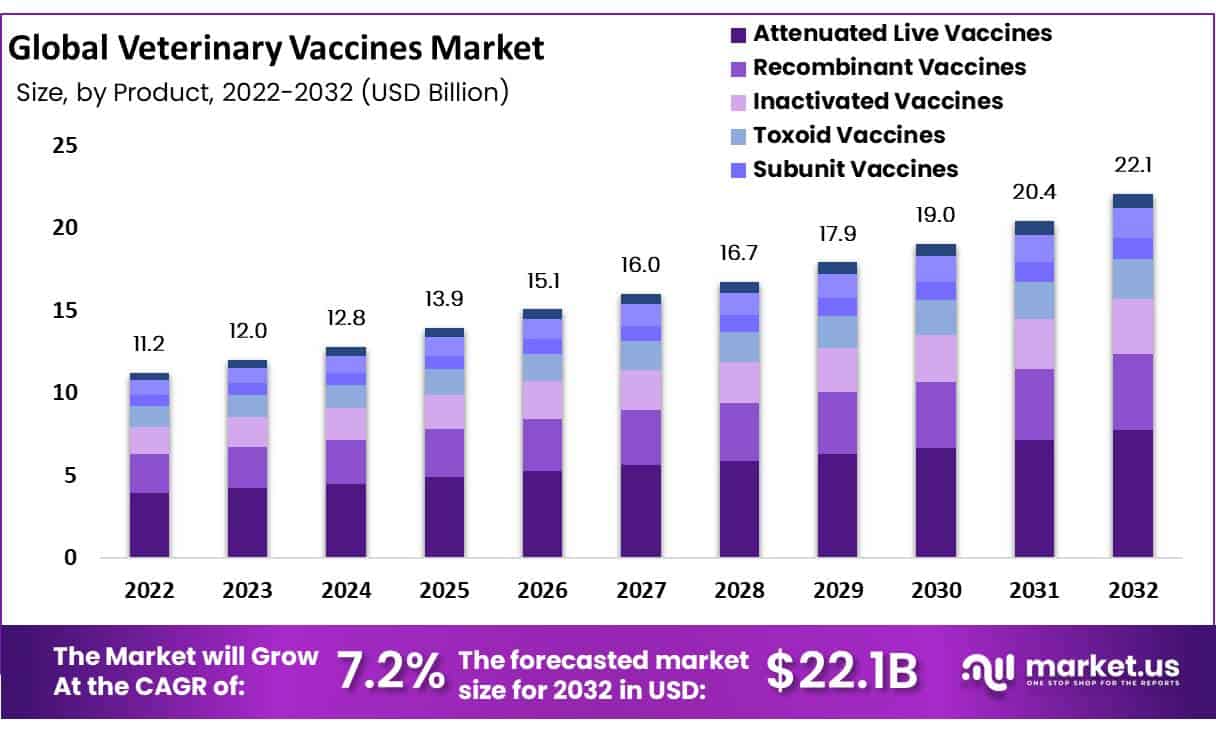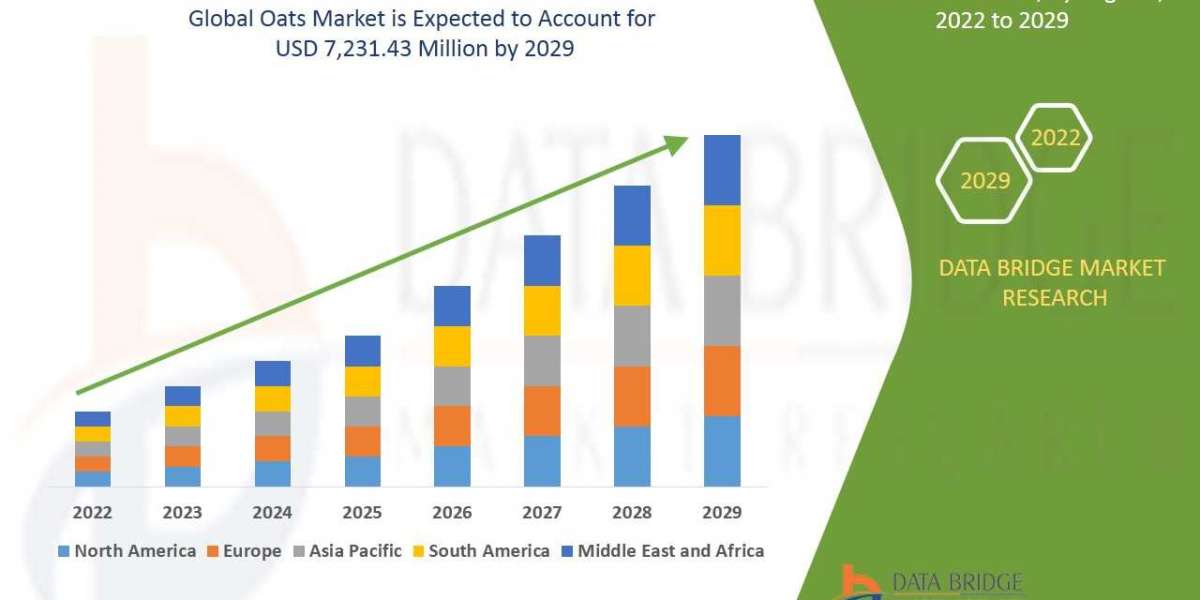The global veterinary vaccines market is projected to reach USD 22.1 billion by 2032, up from USD 11.2 billion in 2022, growing at a CAGR of 7.2% from 2022 to 2032. This growth is mainly driven by rising concerns about animal diseases that affect both livestock and pets. According to the World Organisation for Animal Health (WOAH), outbreaks like avian influenza, foot-and-mouth disease, and rabies have been on the rise. These diseases pose serious risks to both animals and humans. As a result, governments and health agencies are focusing on preventive care through vaccination to limit disease spread.
Food safety and livestock productivity are also key factors supporting market growth. The Food and Agriculture Organization (FAO) of the United Nations stresses the need for healthy animals to produce safe dairy, meat, and eggs. Disease outbreaks in farm animals can lead to severe financial losses. Vaccination helps prevent these losses by improving animal health and reducing the need for costly treatments. This has led to a growing demand for animal vaccines among farmers and food producers around the world.
Government initiatives are playing a strong role in expanding vaccination efforts. Many countries have launched programs to control and eliminate livestock diseases. For example, India’s National Animal Disease Control Programme (NADCP) aims to vaccinate millions of animals against foot-and-mouth disease and brucellosis. In the U.S., the Department of Agriculture (USDA) supports research and disease surveillance through its Animal and Plant Health Inspection Service (APHIS). These programs are crucial in promoting vaccination and protecting public health.

Key Takeaways
- Strong Market Growth : Experts say the veterinary vaccines market is on track to hit USD 22.1 billion by 2032, growing steadily at 7.2% annually.
- Innovative Technology in Vaccines : Recent advancements like DNA and recombinant vaccines are improving vaccine effectiveness, making them easier to store, transport, and administer to animals.
- Recombinant Vaccines Gaining Traction : Recombinant vaccines are expected to dominate due to their strong safety profiles and reliable efficacy, encouraging manufacturers to enhance their production capabilities.
- Rise in Companion Animal Care : Rising global pet ownership and adoptions are driving demand for companion animal vaccines, making this the leading segment in the market.
- Parenteral Delivery Methods Preferred : Parenteral routes, including intramuscular, subcutaneous, and intradermal injections, remain the top choice for effective vaccine delivery in veterinary practices.
- High Prevalence Diseases Drive Demand : Vaccines targeting porcine reproductive and respiratory syndrome are most in demand due to the widespread nature of this disease among swine populations.
- Veterinary Clinics Lead Sales : Veterinary clinics remain the top distribution channel, although pharmacies and drug stores are seeing noticeable growth in animal vaccine availability.
- Key Market Drivers : Increased public awareness about animal health and the risk of zoonotic diseases are fueling demand for safer, more advanced veterinary vaccine products.
GET SAMPLE REPORT : https://market.us/report/veterinary-vaccine-market/request-sample/
Regional Analysis
North America holds a significant share of the global veterinary vaccines market, accounting for around 40%. This dominance is mainly driven by the rising prevalence of zoonotic diseases. Additionally, favorable compensation programs for animal healthcare boost vaccine adoption. Strong veterinary infrastructure and increased awareness among pet owners also support market expansion. Government support and regular vaccination drives further strengthen regional growth. Overall, North America's robust veterinary policies and funding make it a key contributor to the global veterinary vaccines industry.
Europe follows North America as the second-largest market for veterinary vaccines. Several factors drive this growth, including supportive government regulations. The rise in pet insurance approvals is encouraging more owners to seek veterinary care. The region has also seen a growth in the number of veterinary clinics. Improved healthcare infrastructure across European countries supports timely disease prevention. As pet ownership continues to rise, the demand for vaccines and preventive care is expected to grow steadily in this region.
Asia-Pacific is expected to experience the highest growth in the veterinary vaccines market. This is largely due to increasing disposable incomes across many countries in the region. As more people can afford pet care, awareness of animal health has improved. Investments in veterinary services are also rising. Additionally, the region has a large population of livestock, especially in countries like India and China. These factors collectively support the need for preventive vaccines and create strong market opportunities for future growth.



